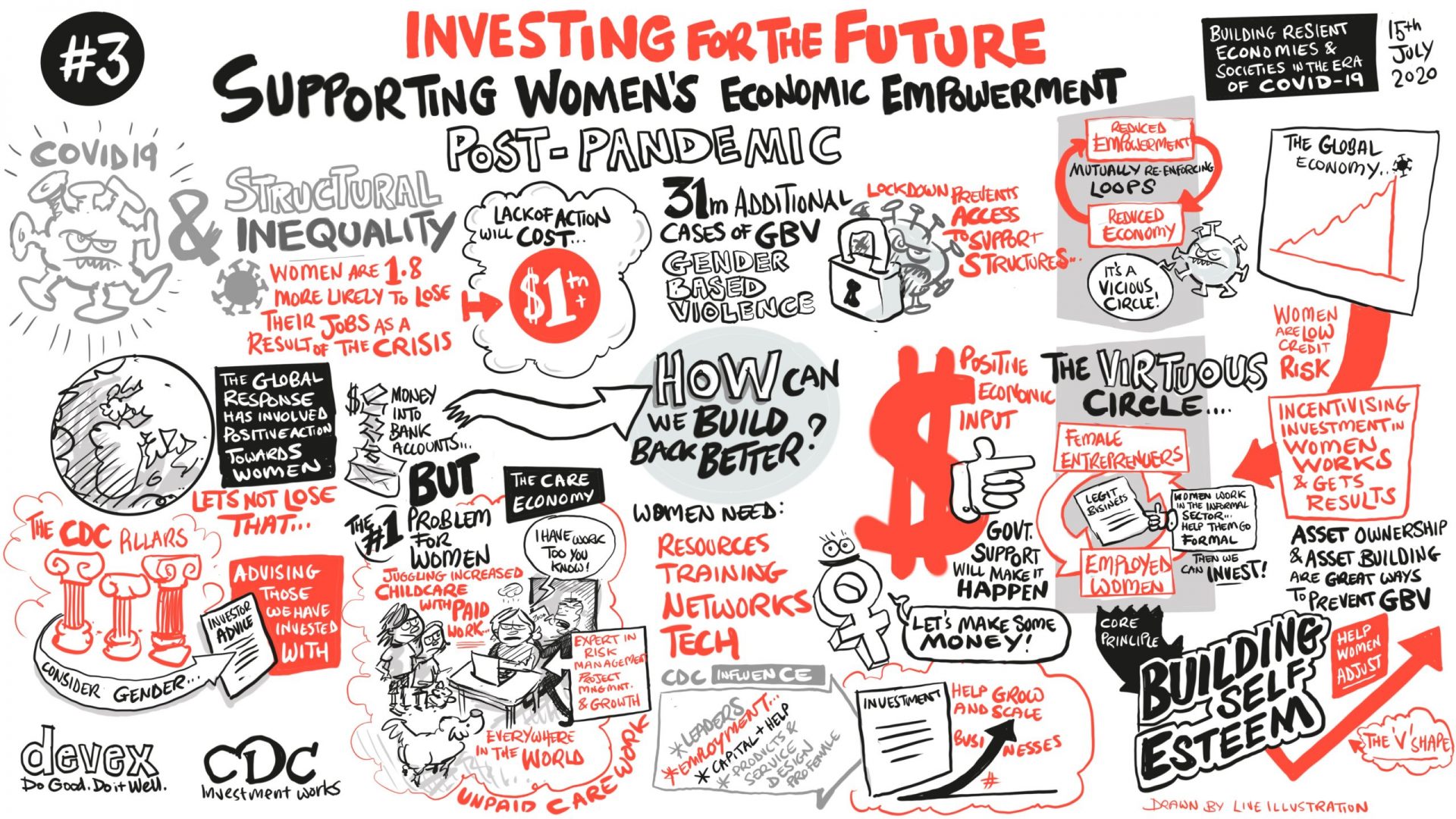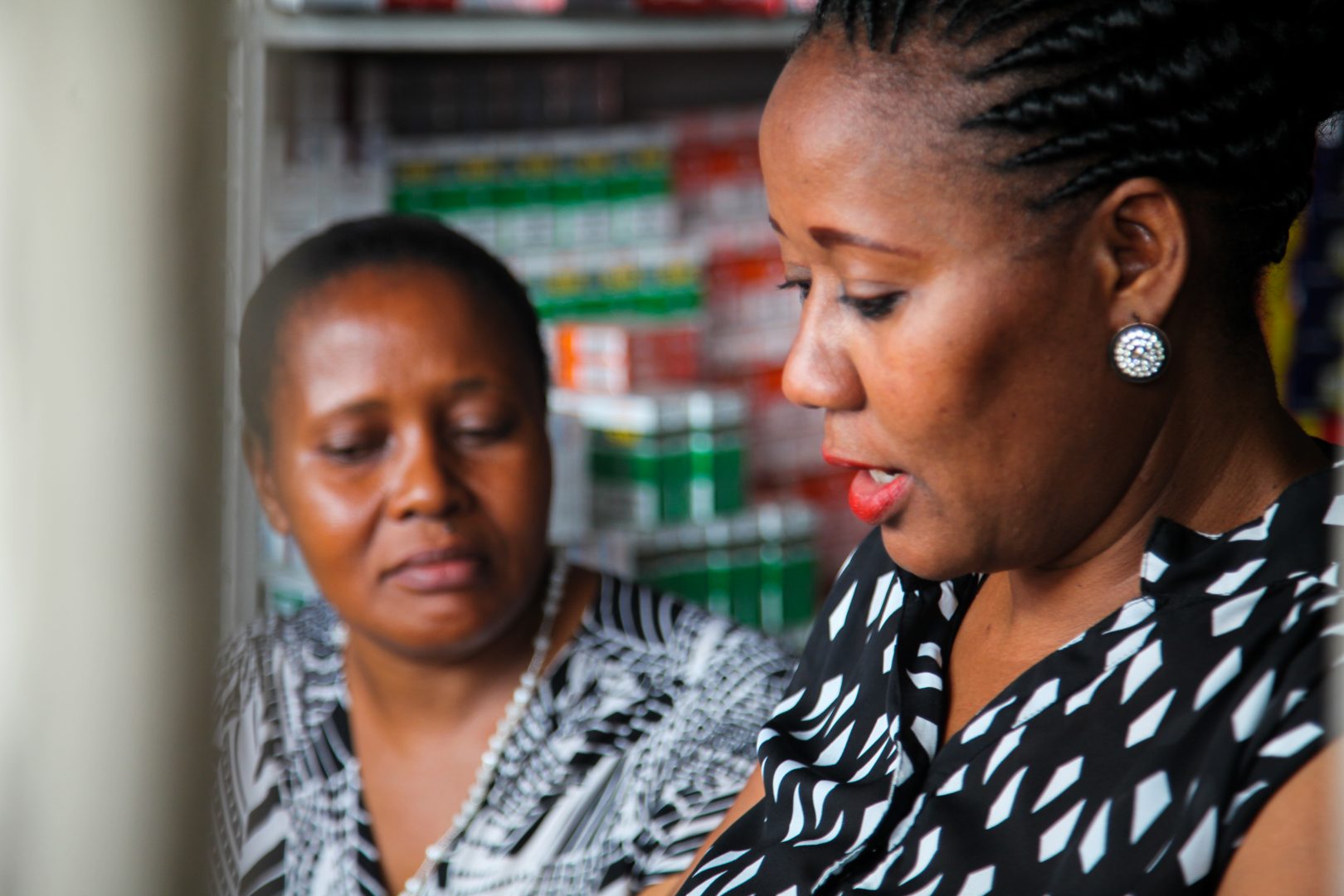Anu Madgavkar is impatient for change. And for her, there’s no time like the present: for every year that we delay action to address the gender gap, the world economy loses a trillion dollars. So while planning for a more gender-balanced world post-pandemic is essential, we can’t afford to wait until recovery begins.
Building back better
“We’ve got to start now,” says Anu. As Partner of the Mumbai McKinsey Global Institute, she’s been looking at how COVID-19 is impacting gender inequality since the crisis began. “The pandemic is reflecting how much lower women are in the hierarchy. From a public finance perspective, this is something we need to address right away.”
In every past global pandemic to date, women’s economic empowerment has been disproportionately affected. At CDC Group we’re actively working to try to mitigate these affects in the era of COVID-19. Our Gender Lead Arpita Raksit explains how: “we’ve been deliberate in our approach to close gender inequalities in workforces, as well as improve access to finance for women and women-owned businesses before the crisis, but we see the crisis as potentially exacerbating those inequalities,” she says. “However there could be opportunity too.”
Arpita and her team have been focused on specific sectors where women are over-represented in low-skilled and low-paid jobs, like manufacturing, agriculture, the garment sector and healthcare. They’ve also been guiding their investee companies through the crisis with gender effects in mind, giving advice on job security, job protection, working from home and looking at consumer protection too. “We’ve been navigating specific challenges with our investees, such as those who are facing retrenchment and furloughs, looking at the job-related data to work out how these issues can be managed in a gender-balanced, gender-smart way, so women are not disproportionately affected,” she says.
Balancing gender dynamics
Gender-based violence and harassment (GBVH)—in particular domestic violence—increase during public health emergencies, as we’re seeing with the pandemic now. The United Nations Population Fund impact assessments estimate that an additional 31 million cases of gender-based violence were perpetrated in the first six months alone of the pandemic.
Anu says that it’s important not to think of gender-based violence issues in isolation from other problems women face globally. “All the challenges society faces from lack of women’s empowerment exist in a mutually-reinforcing loop,” she says. Earlier this month CDC released a guidance note in partnership with IFC and EBRD on managing gender-based violence and harassment in the private sector which sets out ways companies can support women – timely in this heightened time of need. “By economically empowering women, and supporting women to be more influential with decision-making, we can help address the underlying power dynamics which lead to GBVH.” says Arpita.
Helping women to be able to access to smart phones and other devices is a vital part of that economic empowerment, says Mary-Ellen Iskenderian, President and CEO of Women’s World Banking. “Put that smart phone in a woman’s hand and she can move forward”, she says. “One of the biggest trends in the world today is the moving of all our lives to digital. Before COVID-19 we had, on average, a 23 to 30 per cent gender gap in access to smart phones. Why isn’t this an amazing moment to address that inequality of access to resources, to jumpstart this growth?”
Formal working: fundamental to change
For Mamoun Tahri Joutei, Head of the Economic Intelligence Centre at BMCE Bank of Africa, the current lull in economic activity might be an opening to encourage more young women to be entrepreneurs. BMCE Bank of Africa has two incubators that work with universities and business schools, and they reach 10,000 young people each year with a training programme that helps them to launch companies. With an impressive 48 per cent female membership, he’s keen now more than ever to help these women scale up their often small, informal businesses into formal companies. “The interesting part of the training is not the training itself, but watching how the members build bonds with each other and strengthen their social capital. We’re now looking to tailor clubs specially for women who are keen to work together and create formal businesses,” he says.
The issue of so many women working informally is important to change, agrees Mary-Ellen. “Far more women are working in the informal sector than men, and as a result it’s so much harder to find them and address their needs”, she says. “Governments need to make a case for formality. I hear all over the world businesses saying ‘I don’t want to register my business because I’ll need to pay taxes.’ Government needs to work alongside the private sector to point out the benefits to formality that will help businesses and ultimately economic growth.”
In every developed economy in the world, the numbers of women in formal employment drop off a cliff when they have children. Why? “The many judgements that are passed about—by systems, countries and laws—and the expectations about the way women should spend their time, are skewed towards keeping women in household work,” says Anu. “I think this has a strong link to women’s mental health. It boils down to what is valued about a person, and these attitudes are so deeply entrenched.”
Workplaces for women, by women
Investing in the care economy is one way that could help women juggle their work/life responsibilities, according to Arpita. “These are structural issues,” she says. “We need to think more about how we can invest in that underserved and undervalued economy.” According to Anu, women’s caring responsibilities have risen by 30 to 40 per cent since the start of the pandemic, which is equivalent to an extra one to two hours a day. “We want to acknowledge that this is a public asset that we can build that has power for social good,” she says. Mary-Ellen agrees that the care economy is the sector that’s most ripe for change. “There is ample evidence that if you put enough childcare in place then women will participate in the workforce. It’s proven! Let’s do it!”
Having women at the helm of companies is the best way to not only create women-friendly workplaces that are more likely to keep their female employees after they have children, but provide role models for young women beginning their careers to enter the workforce, says Arpita. “One of the four key categories of our gender strategy at CDC is women’s leadership,” she says. “We’re strengthening our influence through our investments and helping women to get into senior leadership positions. As we look into the future and use this framework to support the rebuild agenda, women’s leadership is crucial to keep women in the workforce but also at the entrepreneur level because of the cascading effect of women entrepreneurs employing women. All of this can help regain some of the economic fallout.”
This article is based on discussions at our recent event ‘Investing for the future: Supporting women’s economic empowerment post-pandemic’ which we held in partnership with Devex. Click here to catch up on the full event recording






